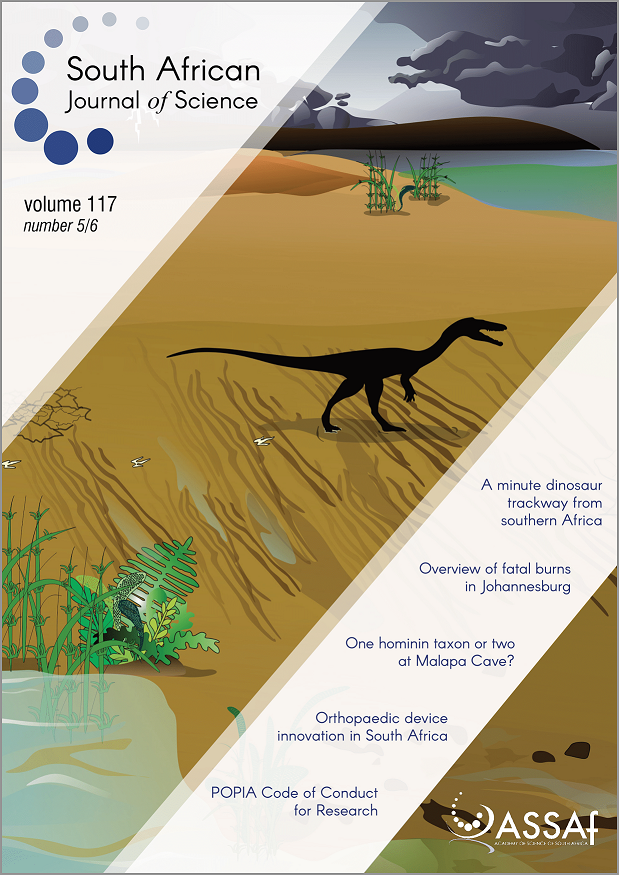Source apportionment of ambient PM10−2.5 and PM2.5 for the Vaal Triangle, South Africa
DOI:
https://doi.org/10.17159/sajs.2021/8617Keywords:
PM10-2.5, PM2.5, chemical composition, trajectory cluster analysis, source apportionmentAbstract
The Vaal Triangle Airshed Priority Area (VTAPA), like other priority areas in South Africa, has an air pollution problem. Understanding the sources contributing to air pollution in this priority area will assist in the selection and implementation of appropriate control strategies. For this study, aerosol samples in the coarse (PM10-2.5) and fine (PM2.5) fraction were collected at four sites in the VTAPA during summer/autumn, winter, and spring. The contributing sources were identified and characterised based on the elemental and ionic compositions obtained through X-ray fluorescence and ion chromatography analysis. The highest seasonal median concentrations of PM10-2.5 (116 μg/m3) and PM2.5 (88 μg/m3) were observed in Sharpeville during the winter. The lowest median concentrations of PM10-2.5 (25 μg/m3) and PM2.5 (18 μg/m3) were detected in Zamdela during the summer/autumn period. At all sites, there was a high abundance of crustal elements in PM10-2.5 and a dominance of coal and biomass combustion-related elements in PM2.5. The Positive Matrix Factorisation receptor model identified dust-related and secondary aerosols as the major contributing sources of PM10-2.5. PM2.5 contributions were predominantly from coal burning for Sebokeng and Sharpeville and from industry, wood and biomass burning, and secondary aerosols for Kliprivier and Zamdela. The results of this study identify the main sources contributing to particulate air pollution in the VTAPA and provide local authorities with valuable information for decision-making.
Significance:
- Dust, industry, domestic coal burning, vehicles, and wood and biomass combustion are the key sources of particulate air pollution in the VTAPA that need to be prioritised by decision-makers.
- Although Sebokeng and Sharpeville are located within the vicinity of industries, domestic coal burning has a greater contribution to particulate loading at these sites.
- Results from this study will assist in the design of local municipality air quality management plans for the VTAPA.
Downloads
Published
Issue
Section
License

All articles are published under a Creative Commons Attribution 4.0 International Licence
Copyright is retained by the authors. Readers are welcome to reproduce, share and adapt the content without permission provided the source is attributed.
Disclaimer: The publisher and editors accept no responsibility for statements made by the authors
How to Cite
- Abstract 1670
- PDF 954
- EPUB 142
- XML 198
- Supplementary Material 86












.png)